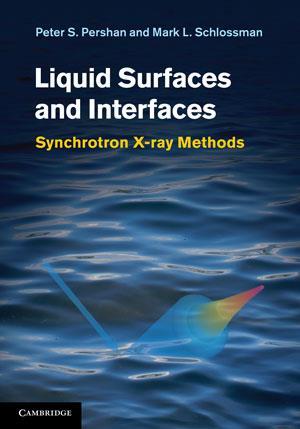Peter S Pershan and Mark L Schlossman
Cambridge University Press
2012 | 311pp | £85
ISBN 9780521814010

Liquid surfaces and interfaces gives a snapshot of the state of the art equipment, data analysis techniques and theoretical concepts that underpin this developing research area. Peter Pershan and Mark Schlossman are leaders in applying synchrotron methods to understand the structure of liquid surfaces and have produced a book that will undoubtedly become required reading for both new and established researchers in this field.
The introduction explains concepts that are essential to understand the unique characteristics of liquid surfaces and interfaces including capillary waves, thin liquid films and buried interfaces. This chapter contains some relatively complex equations, which can be unnerving at first, although with persistence they do add to the explanation. Instrumentation is covered in the next chapter, giving a detailed description of the complex equipment that is required to undertake these experiments and many useful details on optimising the arrangement to achieve the best resolution and signal to noise ratio. Researchers wishing to push the technique to its limit will find a wealth of information in this chapter.
The theory of x-ray scattering from liquid surfaces is covered comprehensively in the third chapter of the book, starting with simple idealised surfaces and the different methods to determine the scattering profile. It extends the ideas to more realistic surfaces and includes effects such as thermal roughness and its influence on x-ray scattering measurements. Again, some dedication is required to work through the equations, but it is an extensive treatment of how to interpret and model the data.
The final chapter of the book is definitely the jewel in the crown, outlining many case studies including scattering from water surfaces, liquid crystals, biologically important interfaces and liquid–liquid interfaces. Researchers are likely to be able to use these as pointers for their own experiments and the inclusion of key references will make this a valuable resource for many studies. Although this book is not for the casual reader, it is likely to grace the shelves of the many research groups studying liquid surfaces and interfaces.
Purchase Liquid surfaces and interfaces from Amazon.co.uk












No comments yet